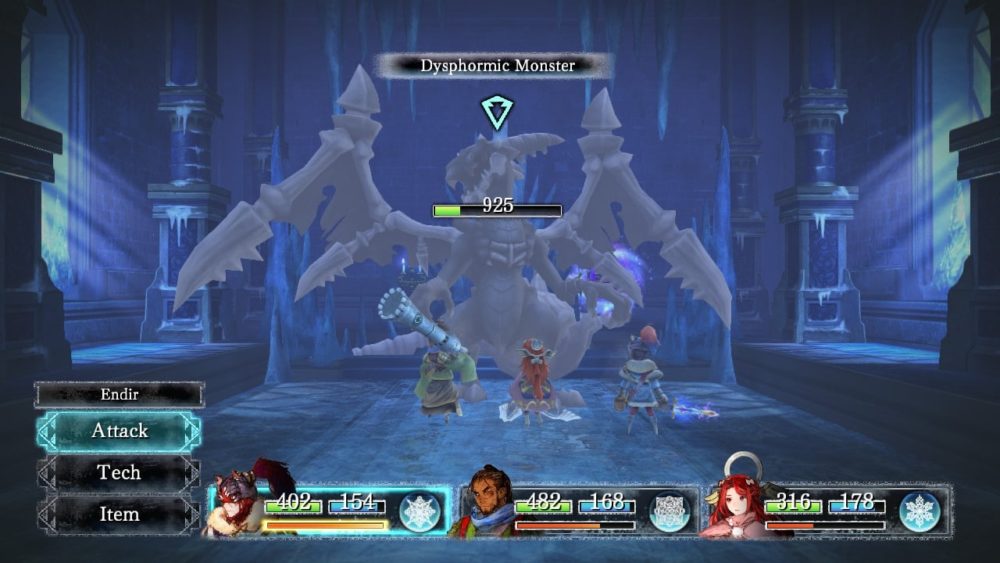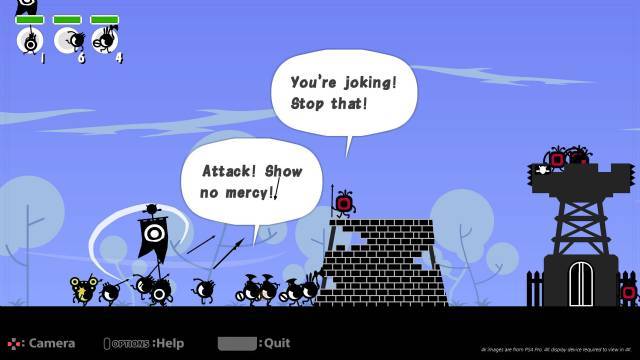Hellblade: Senua’s Sacrifice (PC & PS4)
Hellblade: Senua’s Sacrifice casts you as a young woman of somewhat vague (perhaps Celtic) ancestry, who suffers from psychosis, possibly brought on by schizophrenia. Senua lives with a chorus of voices in her head, sees signs and visions, and slips in and out of waking nightmares. The game’s story is told in sometimes-confusing fragments, but we piece together that Senua was in love with a man named Dillion, who was killed by “Northmen” (this game really has it in for the Vikings) after her darkness pushed him away. Now she must recue Dillion’s soul from the Norse version of hell – how much of Senua’s quest is real, and how much is in her head? Hellblade keeps it murky, although the ending of the game does provide a fairly clear answer.
Ninja Theory have done their best to convey psychosis in a responsible way, consulting with neuroscientists and those with first-hand experience, and sure enough, the game’s depiction of mental illness is unlike what you’ve seen in other games. Hellblade generally does a good job of avoiding “crazy” stereotypes, never condemns or mocks Senua, and its hallucinations can be genuinely off-putting – perhaps a little too off-putting.
The nightmare world of Hellblade is convincing, and, like real bad dreams, isn’t terribly pleasant to inhabit. The constant nattering voices, queasy visions, and Senua’s cries of fear and anguish quickly wore on me, which some will accept as the point. The game is supposed to be alienating and unpleasant they’ll say. And maybe I could accept that in a purely story-driven game where the experience is all that matters, but Hellblade also wants to be a difficult, Dark Souls-style action-adventure game, and the combination of punishing core gameplay and a dreary world was a bit much for me.
Make no mistake though, this dark world is beautifully crafted. Powered by Unreal Engine 4, Hellblade looks as good as any triple-A game you can name, and Senua herself is remarkably realistic. The game occasionally slips into uncanny valley territory, but, for the most part, Hellblade’s performance capture is industry-leading.
The trudging feeling of playing Hellblade is enforced by its level design, which is linear to a fault. You only ever move forward, and the path is a narrow one, with little opportunity, or reason, to explore. If you get lost or confused for even a moment the voices in Senua’s head work double-duty, providing tips on how to move forward. Admittedly, it’s a clever way of combining Hellblade’s gameplay and themes, but it would be much more interesting if the voices occasionally lied or led Senua astray – instead, they almost always tell you exactly the right way to go in the most straightforward way possible.
Hellblade’s stages are split roughly between combat, which we’ll get to in a second, and puzzle solving sections, which usually require Senua to use her unique vision to find certain shapes and symbols hidden in the environment. Typically, you’ll either solve these puzzles right away or spend many minutes wandering around confused and annoyed – either you see the symbols or you don’t, there’s not a lot of logic to it.
Thankfully, Hellblade’s combat is more satisfying, as Ninja Theory clearly haven’t lost their action chops. The system is deceptively simple – Senua can unleash a quick strike, heavy strike, or tackle, and block or evade. Additionally, successfully blocking and landing blows will fill up a meter, allowing you to “focus” and briefly slow down time. That’s all there is to it, but Senua’s attacks feel weighty and satisfying, and the game’s challenge ramps up nicely as the game introduces a steady stream of new enemies that require different tactics.
Combat isn’t perfect though – the game forces you to focus on a single enemy at a time, but will often throw two or three baddies at you at once. The voices in your head will warn you if you’re about to be attacked from behind so you can block, but that feels like a kludge. There are times when you’ll find yourself swarmed by enemies and killed almost immediately, which is particularly frustrating, as Hellblade informs you early on that dying too many times could result in your permanent death. Game over, save deleted. No, really. I didn’t die enough times to experience that, but enemies that can kill you from off screen and permadeath aren’t a good combo.
Ultimately, Hellblade is at its best during its boss fights. Oddly, Senua becomes significantly more resilient when facing bosses – usually as few as three or four enemy hits can kill you, while bosses can pummel you pretty severely without bringing death. That inconsistency aside, the bosses are intimidating, fun to figure out, and empowering to take down. If only there were more of them.
Ninja Theory has been open about the fact that Hellblade is a short game, around six to eight hours, but even knowing that going in, the game feels a bit thin. There are times when the game is clearly stretching for extra time. That said, I can’t get too upset, as this “triple-A indie” only costs $30. I’ve certainly paid more for less, and I’m sure you have, too.
Final Verdict
Hellblade: Senua’s Sacrifice is a tough game to assess. I admire what Ninja Theory has created and think their hearts were in the right place, but I didn’t actually enjoy playing their game that much. There are moments that shine – a particularly intense boss battle here, a genuinely affecting cutscene there – but I found a large portion of Hellblade to be an uncomfortable drag.
What I can tell you is Hellblade: Senua’s Sacrifice is, objectively, a well-made game. I think Ninja Theory achieved what they set out to do, and their level of craftsmanship is impressive. Perhaps you’ll have a different gut reaction to the game than I did. Or maybe you’ll find it even more trying. Appropriately, Hellblade’s allure is largely in the eye of the beholder.
Score: 3 out of 5 stars
This review was based on a PS4 copy of Hellblade: Senua’s Sacrifice provided by Ninja Theory.



